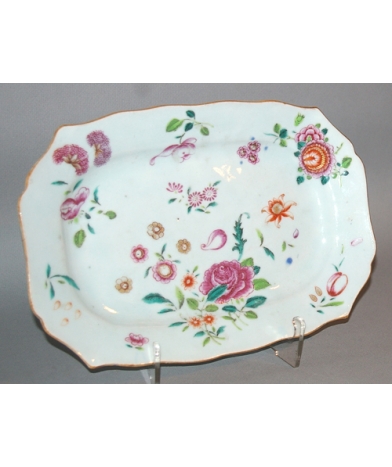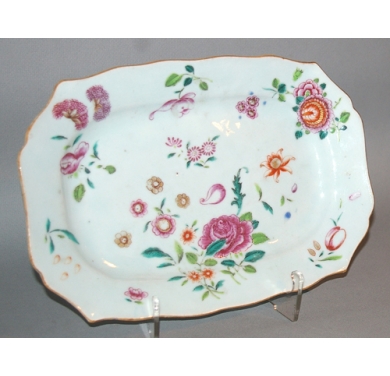Small rectangular plate
Qianlong period (1736-1796)
Dimensions : H. 7 inches x L. 10.5 inches
This rectangular plate belongs to the production documented as ‘‘porcelain from the East India Company’s famille rose’’, which was primarily destined for importation to the European market.
Famille rose, or pink family, ceramics sport polychrome décor in which rosy tones dominate.
Painted accents are applied sur couverte, which is to say after a preliminary firing of plain porcelain covered in transparent, protective glaze.
It is during a second firing at 800°C, called de petit feu, that the colours are fixed.
Famille rose designs appeared during the reign of Emperor Yongzhen (1723-1736) and continued to develop under Emperor Qianlong (1736-1796). The latter’s rule is intimately linked with the history of exchanges between the Far East and the Occident during the 17th and 18th centuries.
It was a Dutch chemist named Andreas Cassius who discovered the formula allowing for the creation of pinkish glazes in 1650. The key was a purple mineral, known forever after as Purple of Cassius; a precipitate obtained from gold salts.
Chinese ceramists quickly procured Cassius’ formula. They began to call the opaque pigments of the famille rose—pale pink, coral red, mauve, salmon and lavender blue— “foreign colours” (Yang ts’ai) or “gentle colours” (Youang ts’ai).



